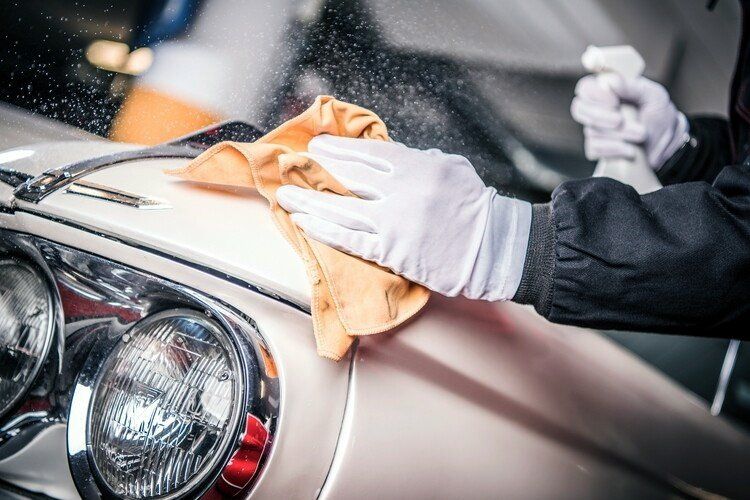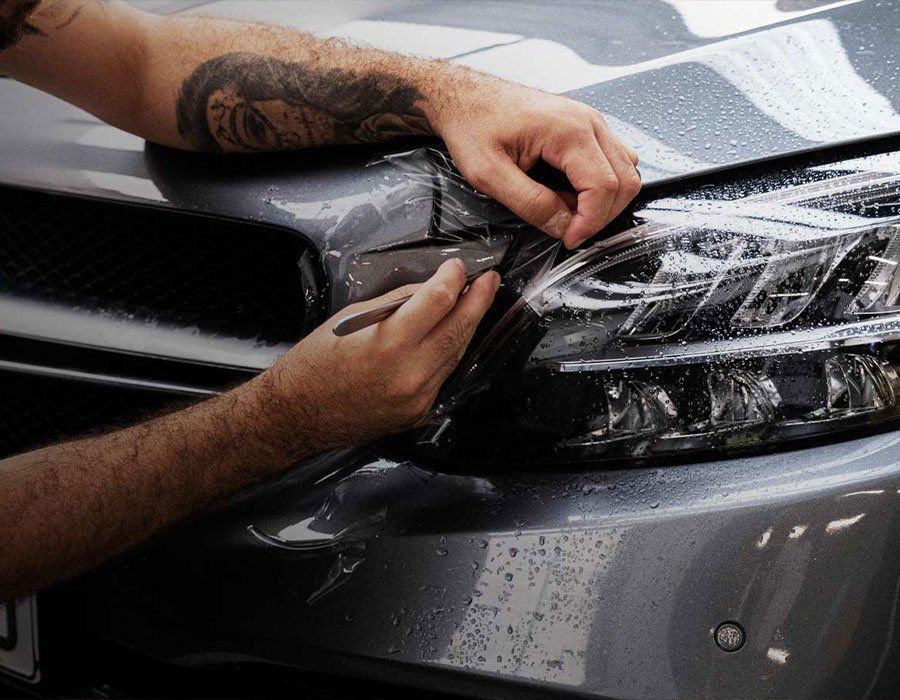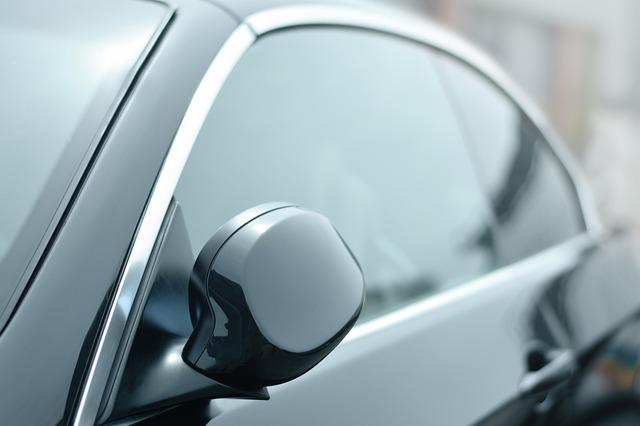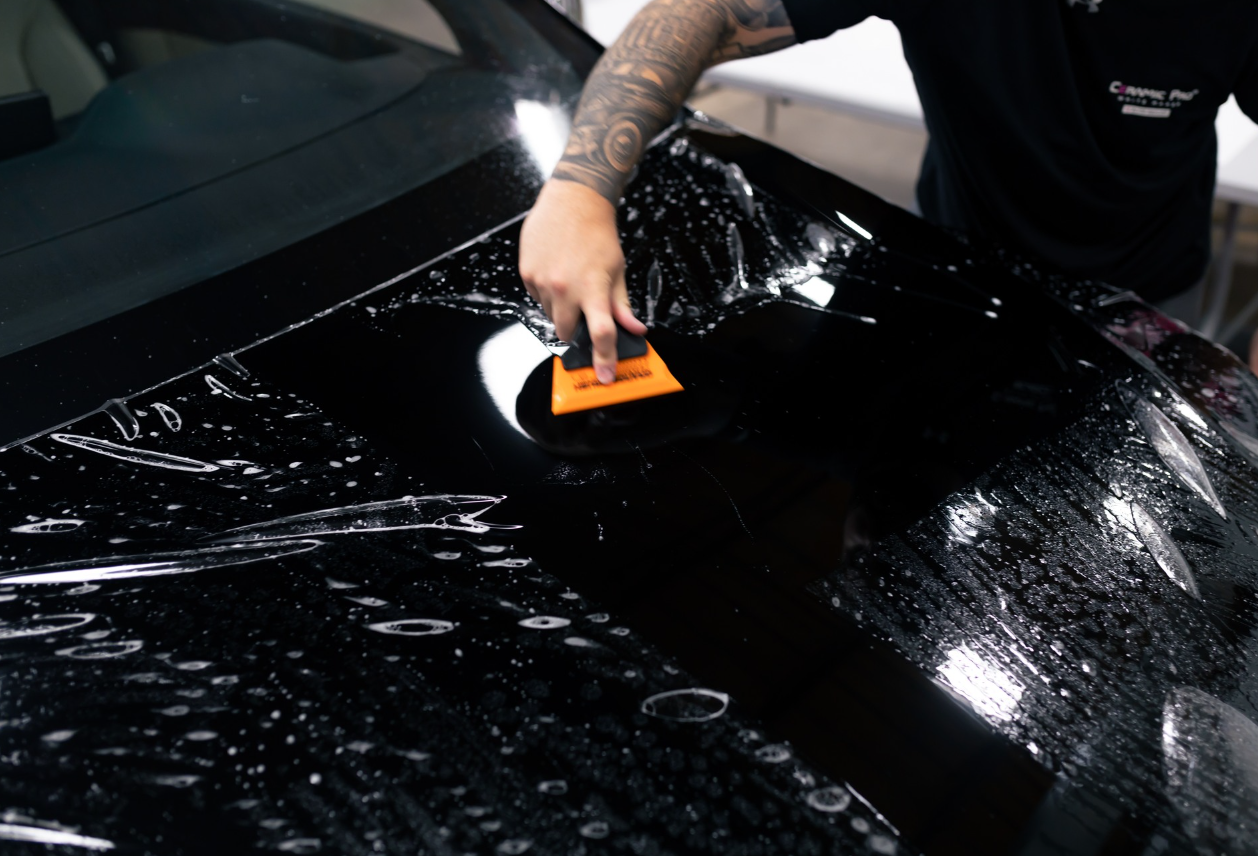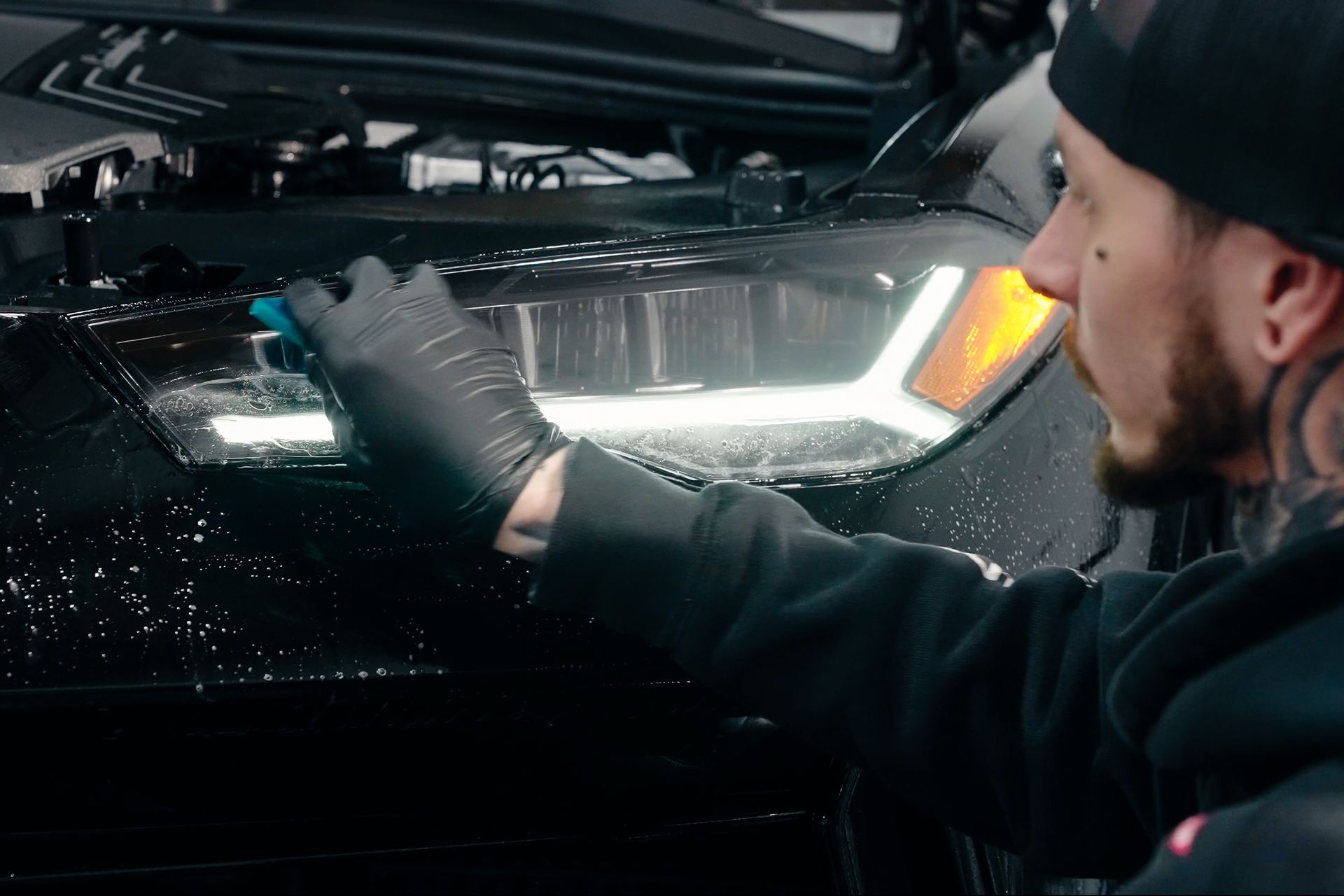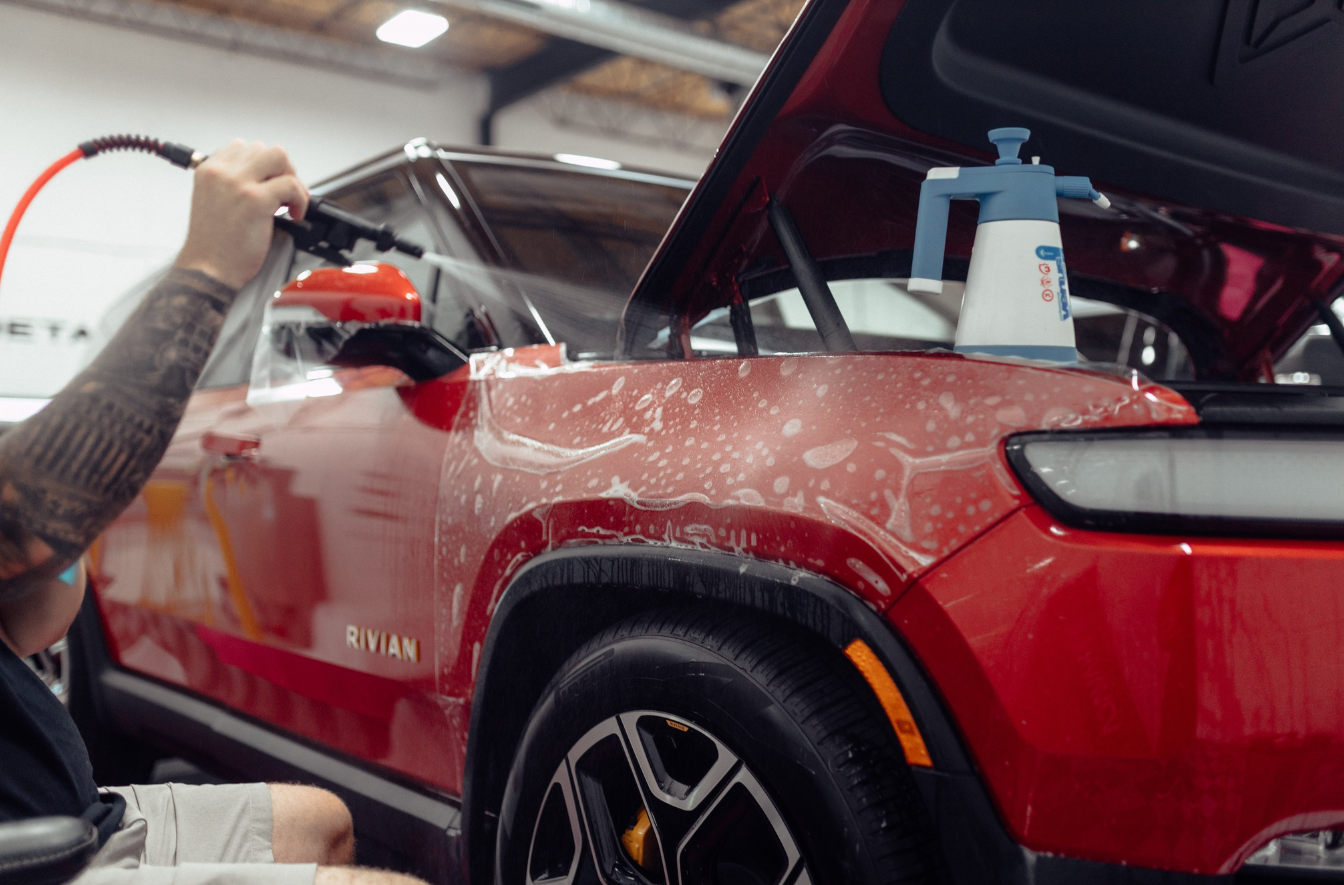Tips for Removing Stains and Road Grime from Your Car's Ceramic Coating
Keeping your car looking sharp can sometimes feel like a never-ending battle against the elements—dust, grime, and pesky stains seem to appear out of nowhere. If you’ve invested in a ceramic coating, you know that maintaining its glossy finish is essential not just for looks but also to safeguard your vehicle from nature's persistent challenges. Thankfully, with the right techniques and products, this task doesn't have to overwhelm you. We’re here to explore some effective cleaning tips tailored specifically for ceramic coatings, ensuring that every wash leaves your car gleaming and protected. So grab your microfiber towels and let’s dive into how you can keep that shine and durability going strong!
To effectively remove stains and road grime from your car's ceramic coating, it is recommended to use a rinseless wash method, which encapsulates dirt particles and minimizes scratching. Additionally, you may apply a specialty water spot remover for stubborn stains, ensuring the cleaning solution does not dry on the surface to avoid streaks or residue.
Assessing Damage
To embark on a successful cleaning journey, it’s crucial to assess the condition of your ceramic coating. This process starts with a thorough visual inspection. Ensure you’re working in well-lit conditions, as shadows can hide pesky imperfections. Focus your gaze on areas where dirt tends to gather and look for signs of water spots or etching caused by acidic contaminants like bird droppings, which can wreak havoc if left unaddressed for too long.
After visually evaluating the surface, it’s time to engage with a tactile examination.
Gently run your hand over the vehicle’s surface. Imagine gliding through a tranquil lake, where every ripple and rough patch tells a unique story. If you encounter areas that feel gritty or uneven, these could indicate embedded contaminants or early degradation stages in the coating itself. Identifying these spots early can prevent minor issues from becoming major headaches later on.
With both visual and tactile assessments completed, we move to documenting your findings.
Taking photographs of the affected areas while jotting down notes about their locations will serve as an excellent reference during your cleaning process. This step is not just useful for tracking progress—it allows you to keep tabs on recurring problems that might need special attention in future cleanings. It’s akin to having a roadmap guiding you through your vehicle's maintenance journey.
Keep in mind that knowing what you're dealing with enables you to make informed decisions regarding the cleaning products and techniques that you choose to deploy. It's all part of preserving that beautiful ceramic coating, ensuring that your car remains not just eye-catching but protected against nature’s adversities.
As you sharpen your observational skills and note what needs addressing, you'll be better prepared to explore suitable cleaning options tailored to your vehicle's unique needs.
Choosing the Right Products
The world of ceramic coatings can be overwhelming with so many options available. However, one guiding principle stands out: the right products can vastly influence the longevity and health of your coating. Choosing poorly can lead to peeling or fading, thereby negating some of the investment you've made in your car’s appearance. It's about more than just keeping your vehicle looking good; it's about protecting that shiny shield you've crafted through careful application.
Understanding pH Levels
At the core of effective cleaning lies the importance of pH levels. Ideally, you should aim for products with a neutral pH level—around 7. Why? Because solutions that are too acidic or too alkaline can strip away or damage the delicate ceramic layer. Consider this akin to choosing skincare products—just as harsh ingredients can irritate your skin, aggressive chemicals can wreak havoc on your car's finish.
Many users have reported that opting for pH-neutral solutions keeps their ceramic coatings intact over time. For example, a positive experience using a pH-balanced car shampoo reinforced the idea: regular washes keep their cars clean and protect the integrity of the ceramic coating.
Effective Grime Removal
Everyday road grime, which includes everything from dirt and dust to more stubborn residues like tree sap or bird droppings, can build up invisibly on your car’s surface. This buildup doesn't just dull the glassy look of a ceramic coating; it can also interfere with its protection against the elements. That’s why employing an effective removal method is crucial. Among various techniques available, using a rinseless wash has become a favorite for many car enthusiasts because it offers ease without compromising safety.
Rinseless Wash Method
Picture this: You arrive home after a long drive, and the last thing you want to do is spend hours washing your car. The rinseless-wash method excels in this situation. The rinseless-wash method has revolutionized the way countless car owners maintain their vehicles without using excessive amounts of water. To start, simply follow the product's mixing instructions to create an effective solution. Typically, you'll add 1-2 ounces of rinseless wash into a bucket of lukewarm water. This temperature helps to enhance the cleaning process without harming the ceramic coating.
When using this technique, always opt for soft microfiber cloths instead of rough sponges or brushes that could scratch your surface.
Drench your microfiber cloth in the prepared solution, wring it out to remove any excess moisture, and then wipe down one section of your car at a time. This approach allows you to capture dirt effectively while avoiding streaks or smears on the coated surface. Once you finish a section, switch to a clean cloth for drying; this prevents cross-contamination and helps maintain that immaculate shine.
While rinseless washing efficiently tackles most grime types, there will be instances where tougher stains require specialized treatment to ensure nothing gets left behind.
Specialized Stain Removers
Specialty stain removers are effective in removing particularly stubborn stains, such as tree sap or worn-in contaminants, that your rinseless wash cannot handle. Products specifically designed for ceramic-coated vehicles excel at removing such blemishes without causing damage. For instance, using a vinegar solution can work wonders on fresh water spots due to its mild acidic properties.
Remember that when handling these stronger cleaners, always read the directions carefully and perform a spot test first, especially if you're unsure how the material interacts with your ceramic coating.
After applying the designated product for tough stains, allow enough dwell time as per the manufacturer's guidelines before rinsing it off thoroughly with clean water. Failing to do so might result in streaks or remnants of residue left on the car exterior, which not only dulls its appearance but may also compromise its protective barrier.
As we explore further methods of dealing with difficult marks and residues, understanding how to tackle these issues will help keep your vehicle looking pristine.
Tackling Tough Stains
To effectively remove challenging stains from your car's ceramic coating, a strategic approach is crucial. These substances not only mar the look of your vehicle but can also harm the protective layer if left unattended. One of the best tools you can bring into your arsenal is a clay bar. Clay bars are excellent at removing stubborn contaminants that regular washing might miss, and they can give your ceramic coating the shine it deserves.
Maintaining Ceramic Coating
Once your car is clean, maintaining the integrity of the ceramic coating ensures it remains effective for years to come. It's not just about aesthetics; it's about protecting that gleaming finish and enhancing the durability of your paint. Regular washing is essential—aim for a routine wash every two to four weeks using a pH-neutral soap. This is crucial because soaps with extreme pH levels can degrade the ceramic coating over time, leaving your vehicle vulnerable to grime buildup.
Avoiding harsh cleaners cannot be overstated. Many users unknowingly reach for products containing abrasives or strong solvents that can harm the protective layer of ceramic coatings. Instead, keep your cleaning arsenal stocked with safe, effective products designed specifically for coated cars.
After washing, it’s imperative to dry your car thoroughly with a high-quality microfiber towel. Regular cloths often leave behind lint or streaks, which can ruin the pristine look of the coating. Microfiber towels with a GSM (grams per square meter) of at least 300 are ideal as they absorb water efficiently while preventing swirl marks on the surface.
In addition to routine maintenance, expert tips can make the entire process smoother and more effective.
One important piece of advice is to always allow cleaning solutions—especially those used for removing spots or contaminants—to dwell on the surface for a few moments before rinsing. This practice enhances their effectiveness in breaking down dirt and grime without drying out, which can often lead to streaks or lingering residues.
Expert Cleaning Tips
When it comes to car cleaning, astute car owners understand the significance of the technique. For instance, cleaning your car in a shaded area or during cooler parts of the day is crucial. Direct sunlight not only saps your energy but also causes cleaning solutions to dry too quickly. This hurried process can leave behind unsightly streaks on your car’s surface and may even damage the protective coating. Instead, choose morning or late afternoon when temperatures are typically milder and conditions more favorable.
Next up, let’s talk about tools. Using the right equipment can drastically improve the quality of your wash. A two-bucket system, consisting of a soapy water bucket and a rinse bucket, significantly enhances the quality of your wash. Imagine washing your car with confidence, knowing you're eliminating grime rather than spreading it around! It became an enlightening moment for me when I switched to this practice; my results improved significantly, both in shine and overall care.
Also consider investing in high-quality microfiber towels for drying since they are gentle on surfaces and minimize scratches—a small investment that pays off by maintaining that glossy finish. Furthermore, drying should always be done in shaded areas or sheltered spots to avert water spots. If left unattended, these spots can become difficult to remove, and no one wants to deal with the added hassle.
Another little-known secret is to integrate booster sprays into your routine every few months. These boosters help restore lost hydrophobic properties by giving that fearsome water-beading ability a much-needed boost. Following manufacturer instructions for application ensures optimal results without compromising the integrity of your ceramic coating.
By adopting these expert tips into your cleaning regimen, you’ll discover remarkable results—ensuring that your car retains its pristine appearance while prolonging the life of its ceramic coating. When you perform each wash correctly, you will notice the ease with which you can maintain that protective layer against both natural forces and road grime.
To ensure the long-lasting beauty of your vehicle's finish and effectively protect its ceramic coating, consider our professional detailing services at
Baltimore Detail. Call us at (410) 238-3000 today!





